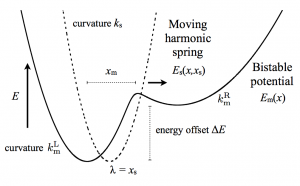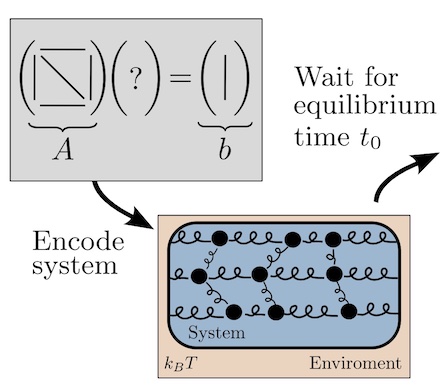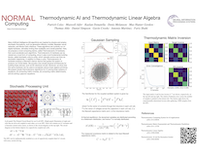Article: Thermodynamic geometry of minimum-dissipation driven barrier crossing
David Sivak, Gavin E. Crooks Phys. Rev. E 94(5):052106 (2016)
[ Full text | Journal | arXiv ]
The last paper from our time working together in Berkeley. Ironically, also the first project David worked on during his postdoc. But a 7 year lag from inception to completion matches my previous records. [ Crooks2008a, Crooks2008b].
Abstract
We explore the thermodynamic geometry of a simple system that models the bistable dynamics of nucleic acid hairpins in single molecule force-extension experiments. Near equilibrium, optimal (minimum-dissipation) driving protocols are governed by a generalized linear response friction coefficient. Our analysis demonstrates that the friction coefficient of the driving protocols is sharply peaked at the interface between metastable regions, which leads to minimum-dissipation protocols that drive rapidly within a metastable basin, but then linger longest at the interface, giving thermal fluctuations maximal time to kick the system over the barrier. Intuitively, the same principle applies generically in free energy estimation (both in steered molecular dynamics simulations and in single-molecule experiments), provides a design principle for the construction of thermodynamically efficient coupling between stochastic objects, and makes a prediction regarding the construction of evolved biomolecular motors.




